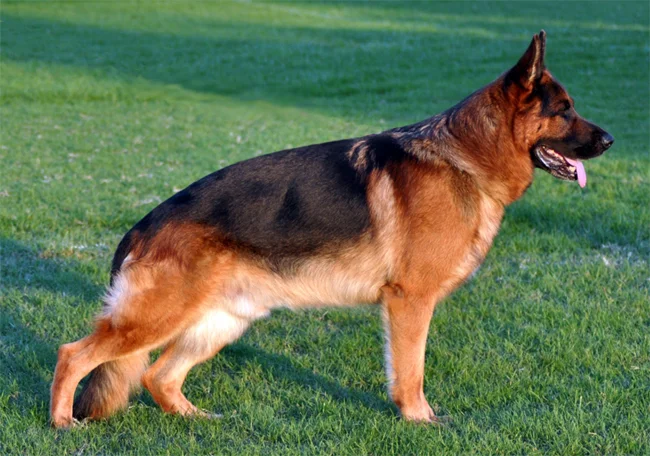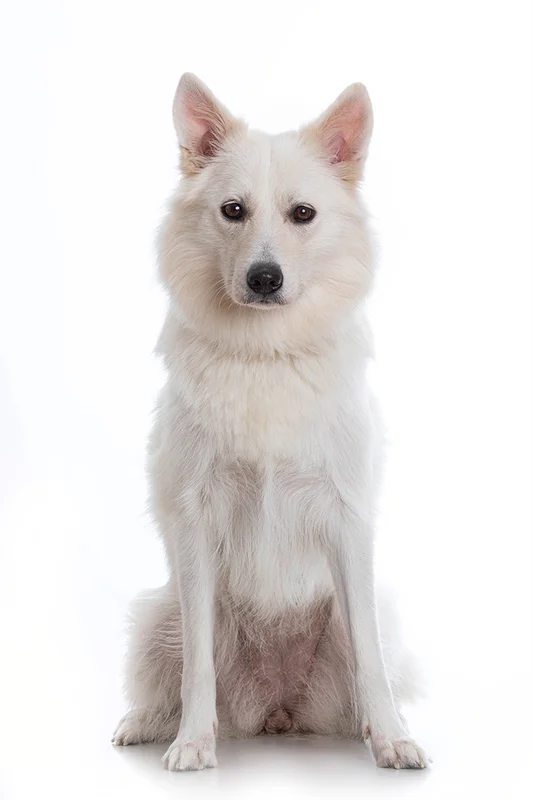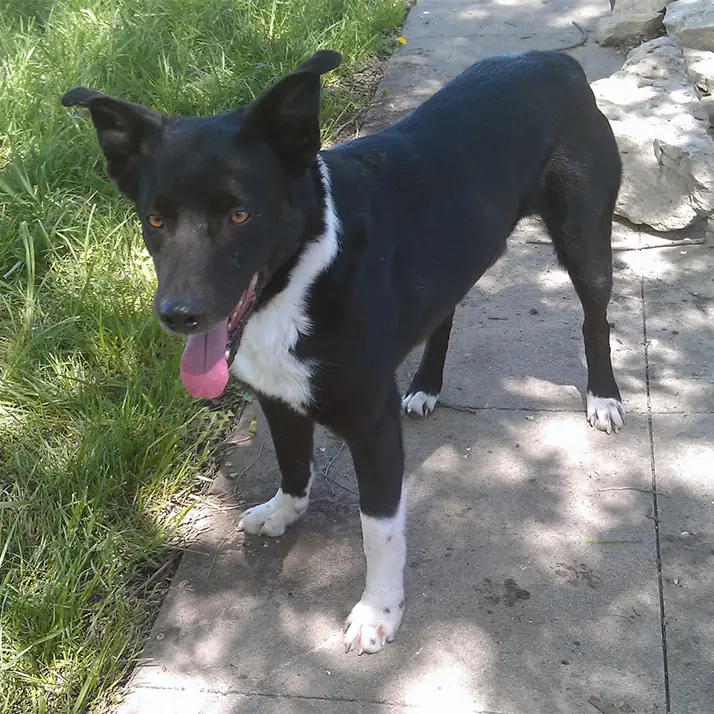English Shepherd
The English Shepherd is a versatile working dog known for its intelligence, adaptability, and loyalty. With a rich history as a farm dog, this breed excels in herding, guarding, and companionship, making it an ideal choice for families.
Overview
🐕Breed Overview
✨Key Traits
💡What Makes English Shepherd Special
One of the standout traits of the English Shepherd is its versatility. This breed excels in various roles, from herding livestock to serving as a family companion.
Their intelligence allows them to learn quickly and adapt to different tasks, making them suitable for various activities, including agility, obedience, and herding trials. English Shepherds are also known for their strong work ethic and desire to please their owners, which makes training a rewarding experience.
Their natural empathy and protective instincts make them excellent guardians of both family and livestock, showcasing their ability to balance gentleness with assertiveness when needed. This breed's unique combination of traits makes them well-suited for families, farms, and active individuals alike.
The English Shepherd is a remarkable breed that embodies versatility and intelligence, making it an ideal companion for families and a reliable worker on farms. Originating from the working dogs brought to America by English and Scottish settlers, this breed has a rich history as an all-around farm dog. Unlike specialized herding breeds, English Shepherds were bred to perform various tasks, including herding, guarding, and hunting, making them invaluable to subsistence farmers in the 17th to early 20th centuries.
With a medium-length coat that can be straight, wavy, or curly, English Shepherds are easily recognizable by their balanced proportions and friendly demeanor. In terms of temperament, English Shepherds are known for their high intelligence and unique kindness towards their families. They are adaptable and quick learners, but they can also exhibit a bossy streak if not properly guided.
This breed thrives in environments that provide ample mental and physical stimulation, as they require regular exercise to prevent boredom and destructive behaviors. English Shepherds are excellent companions for children and can form strong bonds with their families, making them loving and protective pets. As working dogs, English Shepherds excel in various activities, including herding trials, agility competitions, and obedience training.
Their natural instincts and trainability make them well-suited for these tasks, and they often enjoy participating in dog sports. With a strong work drive and a desire to please, English Shepherds are happiest when they have a job to do. Overall, the English Shepherd is a breed that combines intelligence, versatility, and loyalty, making it a cherished companion for families and a dedicated worker on farms.
Whether herding livestock, participating in dog sports, or simply enjoying time with their families, English Shepherds are sure to bring joy and companionship to any household.
🎉Fun Facts
English Shepherds are known for their unique loose-eyed herding style, which sets them apart from breeds like the Border Collie.
English Shepherds are often described as having a kind and gentle demeanor, making them excellent family pets.
They have a strong instinct to chase and can excel in activities like tracking and hunting.
This breed was once the most common dog in America during the 19th and early 20th centuries, serving as a reliable farm companion.
Breed Characteristics
Family & Friends
Good Behavior
Get Up & Go
Household Harmony
Temperament & Personality
✨Key Traits
🐕Core Temperament
The English Shepherd's temperament is characterized by its intelligence, loyalty, and adaptability. They are known for being friendly and affectionate with their families, often forming strong bonds with children and other pets.
This breed is typically eager to please and enjoys participating in family activities. However, their independent nature can sometimes lead to a bossy streak, requiring consistent training and leadership from their owners.
English Shepherds are generally calm and relaxed at home but need regular exercise and mental stimulation to prevent boredom. Their protective instincts make them excellent watchdogs, but early socialization is essential to ensure they are well-adjusted around strangers and other animals.
💫Personality Profile
English Shepherds are known for their friendly and adaptable nature. They are intelligent dogs that thrive on mental and physical stimulation, making them eager learners and excellent companions.
This breed is typically very loyal to their families and can be protective of their home and loved ones. While they may be wary of strangers, they warm up quickly once they feel comfortable.
English Shepherds are playful and enjoy engaging in activities with their families, whether it's playing fetch, participating in dog sports, or simply lounging around the house. Their independent nature means they can work well alone, but they also enjoy being part of a team with their human companions.
🔊Vocal Tendencies
English Shepherds are generally moderate barkers. They may bark to alert their owners of strangers or unusual activity, but they are not known to be excessive barkers.
Their vocalizations can vary depending on the situation; for example, they may bark excitedly during play or when greeting family members. While they are watchful and can be protective, proper training and socialization can help manage their barking tendencies, ensuring they are well-mannered companions.
Affection & Social Traits
Energy & Activity
Communication Style
Care Requirements
🏃♂️Exercise Requirements
Daily Exercise
English Shepherds are highly energetic dogs that require a significant amount of exercise to maintain their physical and mental well-being. Ideally, they need at least 40 minutes of vigorous exercise each day, which can include activities such as walking, running, playing fetch, or engaging in dog sports like agility and obedience training.
These dogs thrive on mental stimulation as well, so incorporating puzzle toys or training sessions into their routine is beneficial. Puppies may require shorter, more frequent play sessions, while senior dogs may need gentler activities to accommodate their energy levels.
Regular exercise helps prevent behavioral issues such as destructiveness or anxiety, ensuring that English Shepherds remain happy and well-adjusted companions. Without adequate exercise, they may become bored and exhibit undesirable behaviors, such as chewing or excessive barking.
Preferred Activities
🏠Living & Adaptability
Space Requirements
English Shepherds are medium-sized dogs that thrive in environments where they have ample space to move and play. They adapt well to both rural and suburban settings, but they do best in homes with large yards or access to open areas where they can run freely.
In urban settings, they can live in apartments if their exercise needs are met through regular walks and trips to dog parks. Owners in smaller living spaces should ensure that their dogs receive sufficient mental and physical stimulation to prevent boredom and anxiety.
The breed's size and energy level mean that they can become restless in confined spaces, leading to potential destructive behaviors if not properly exercised.
Climate Preference
🍲Feeding Guide
Schedule
Food Types
Portion Size
Special Nutritional Needs
English Shepherds do not have specific dietary restrictions, but it is essential to provide a balanced diet rich in protein to support their active lifestyle. Owners should be mindful of food sensitivities and adjust their dog's diet accordingly. Regular veterinary check-ups can help identify any specific nutritional needs or health concerns.
✨Grooming Requirements
Grooming Overview
English Shepherds have a medium-length coat that can be straight, wavy, or curly, and they require minimal grooming to keep it healthy. Regular brushing is recommended to manage shedding, which can be moderate to heavy, especially during seasonal changes.
A slicker brush or undercoat rake can help remove loose hair and prevent matting. Bathing should be done as needed, typically every few months or when the dog gets particularly dirty.
The coat is designed to repel dirt, making it easy to maintain. Regular checks of the ears, teeth, and nails are also essential to ensure overall health and hygiene.
Care Schedule
Brush weekly; bathe as needed (every few months); trim nails every 2-4 weeks.
Health Profile
⚕️Health Care
Regular health care is crucial for maintaining the lifespan of English Shepherds. Routine veterinary check-ups, vaccinations, and preventive treatments can help detect health issues early and ensure optimal health throughout their lives.
Owners should also be proactive about dental care, parasite prevention, and maintaining a healthy diet to support their dog's overall well-being. Early detection of health problems can lead to more effective treatment and a better quality of life for the dog.
Health Issues Overview
⏳Average Lifespan
Genetic Factors
Genetics play a significant role in the lifespan of English Shepherds. As a breed that has not been aggressively over-bred, they generally avoid many hereditary health issues common in other breeds.
However, potential owners should research the hip ratings of breeders' stock and consider genetic testing for conditions like the MDR1 gene mutation. Selecting a reputable breeder who prioritizes health testing and genetic diversity can help ensure a healthier dog with a longer lifespan.
Living Conditions
The lifespan of an English Shepherd can be influenced by various environmental factors, including housing conditions, climate, and social interactions. Dogs that live in environments with ample space for exercise and play tend to be healthier and live longer.
Regular social interaction with family members and other pets can also contribute to their overall well-being. Providing a stimulating environment with mental challenges, such as puzzle toys and training activities, can help prevent boredom and promote longevity.
Additionally, exposure to different weather conditions should be managed to ensure the dog's comfort and health.
🏥Common Health Issues
Hip Dysplasia
Warning Signs
🔬Diagnosis
Veterinarians typically diagnose hip dysplasia through physical examinations and X-rays.
💊Treatment
Treatment options include weight management, physical therapy, and in severe cases, surgical intervention.
📝Management Tips
Maintain a healthy weight, provide joint supplements, and engage in low-impact exercise to support joint health.
MDR1 Gene Mutation
Warning Signs
🔬Diagnosis
A simple cheek swab test can determine if a dog carries the MDR1 gene mutation.
💊Treatment
Management involves careful medication selection and monitoring by a veterinarian.
📝Management Tips
Avoid certain medications that can cause adverse reactions; consult with a veterinarian for safe treatment options.
🛡️Preventive Care
🔬Hip Evaluation
Hip Evaluation assesses the dog's hip joints for signs of dysplasia or other abnormalities, which can lead to joint pain and mobility issues.
📅 Recommended for all breeding dogs and should be conducted annually for older dogs.
🔬MDR1 Gene Test
The MDR1 Gene Test identifies whether the dog carries the MDR1 gene mutation, which can affect their sensitivity to certain medications.
📅 Recommended for all English Shepherds, especially those intended for breeding.
Training
🧠Intelligence & Trainability
💪Work Drive
English Shepherds possess a strong work drive, stemming from their history as versatile farm dogs. They thrive when given tasks to complete, whether it's herding livestock, participating in dog sports, or engaging in interactive play with their families.
This breed's intelligence and eagerness to please make them highly trainable, but they require regular mental and physical challenges to stay happy and fulfilled. Without sufficient engagement, English Shepherds may resort to destructive behaviors, as their natural instincts compel them to find a job to do.
Activities such as tracking, agility, and obedience training are excellent ways to channel their energy and intelligence.
⚠️Training Considerations
English Shepherds are intelligent and independent dogs, which can sometimes lead to behavioral challenges if not properly managed. Their natural inclination to enforce rules and maintain order can result in bossy or stubborn behavior, especially if they perceive a lack of leadership.
To overcome these challenges, it is essential for owners to establish themselves as confident and consistent leaders. Positive reinforcement training methods work best, as they engage the dog's intelligence and desire to please.
Socialization from a young age is crucial to help them become well-adjusted adults, as it reduces their tendency to be wary of strangers. Providing mental stimulation through training and interactive play can also help mitigate any behavioral issues that arise from boredom or excess energy.
📝Training Tips
Training an English Shepherd requires patience and consistency, as they are intelligent and eager to learn. Start with basic obedience commands and gradually introduce more complex tasks.
Use positive reinforcement techniques, such as treats and praise, to encourage desired behaviors. Engaging in regular training sessions will not only strengthen the bond between the dog and owner but also provide the mental stimulation that this breed craves.
Incorporating activities that align with their natural instincts, such as herding trials or agility courses, can make training more enjoyable for both the dog and owner. Consistent socialization with other dogs and people is essential to ensure they develop into well-rounded companions.
History & Heritage
📜Origin Story
The English Shepherd's story begins in the rural landscapes of Northern England and Scotland, where early settlers brought their working dogs to the American colonies. These dogs were bred to assist with the diverse needs of small farms, where they herded cattle, sheep, pigs, and poultry.
As American farmers recognized the breed's versatility, the English Shepherd became a staple on farms across the Midwest and East. The breed's ability to work independently and its strong bond with humans made it a trusted companion for families.
Over time, as farming practices changed and larger, less diversified operations replaced small farms, the English Shepherd's numbers dwindled. However, its legacy as a reliable working dog and loyal family companion endures, with dedicated enthusiasts working to preserve the breed's unique qualities.
⏳Development History
The English Shepherd originated from the working farm dogs brought to America by English and Scottish settlers in the 17th through 19th centuries. These dogs were bred for their versatility rather than for strict adherence to breed standards, which were not established until the late 19th century.
As subsistence farmers relied on these dogs for various tasks, the breed evolved to become an all-around farm dog capable of herding, guarding, and hunting. The English Shepherd was often referred to as the Scotch Collie during the 18th and 19th centuries, but this term fell out of favor in the 20th century.
Despite its decline in popularity with the rise of specialized breeds, the English Shepherd remains a testament to the working dog lineage, valued for its intelligence and adaptability.
🛡️Purpose & Historical Role
Historically, the English Shepherd was bred for its versatility on small farms, where it served multiple roles, including herding livestock, guarding property, and hunting vermin. Unlike specialized herding breeds, English Shepherds were valued for their ability to adapt to various tasks, making them indispensable to subsistence farmers.
They were known for their gentle handling of livestock, as well as their capability to be assertive when necessary. This breed's historical role as a multi-purpose farm dog has shaped its temperament and abilities, making it a well-rounded companion for families and a reliable worker on farms.
🏺Cultural Significance
The English Shepherd has played a vital role in American agricultural history, serving as a versatile working dog on small farms throughout the 17th to early 20th centuries. This breed was highly valued for its ability to perform various tasks, from herding livestock to guarding property, making it an integral part of rural life.
Its adaptability and intelligence have made it a beloved companion for families, particularly those with children. The breed's historical significance is reflected in its presence on farms across the Midwest and East, where it was often the most common breed during its peak popularity.
Today, the English Shepherd is celebrated not only for its working abilities but also for its loyalty and companionship, making it a cherished family pet.
Conservation Status
This breed is less common but has stable populations in certain regions.









